Artnet Auctions
Explore 4 Rare Yet Iconic Prints by 4 Famous Artists—From Andy Warhol to Kaws—in Artnet’s Contemporary Editions Sale
Works by Banksy, Damien Hirst, and George Condo are also included in the sale.
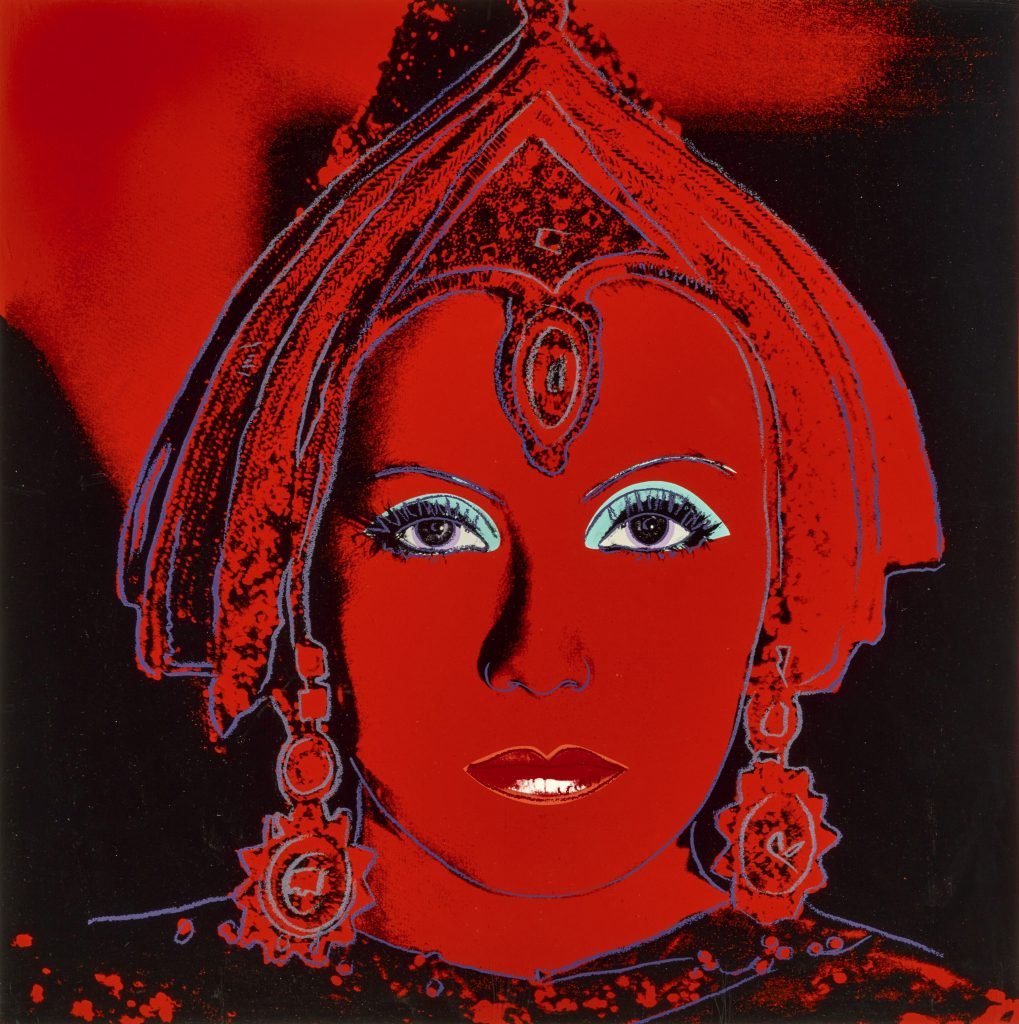
Works by Banksy, Damien Hirst, and George Condo are also included in the sale.

Artnet Auctions

Prints and multiples have a centuries-old history as a favorite of artists, beloved for their comparative speed of production and their ability to convey new ideas with a sense of experimentation. Many artists—perhaps most notably Andy Warhol—even went so far as to make prints and multiples a cornerstone of their practice.
Currently live for bidding, Artnet Auctions presents its latest Contemporary Editions auction, comprised of diverse prints and multiples by some of art history’s most intriguing and influential artists. Marking the sale, Specialist Lauren Whitton and Conner Williams, Artnet’s Head of Prints and Multiples, walk us through some of the sale’s top lots.
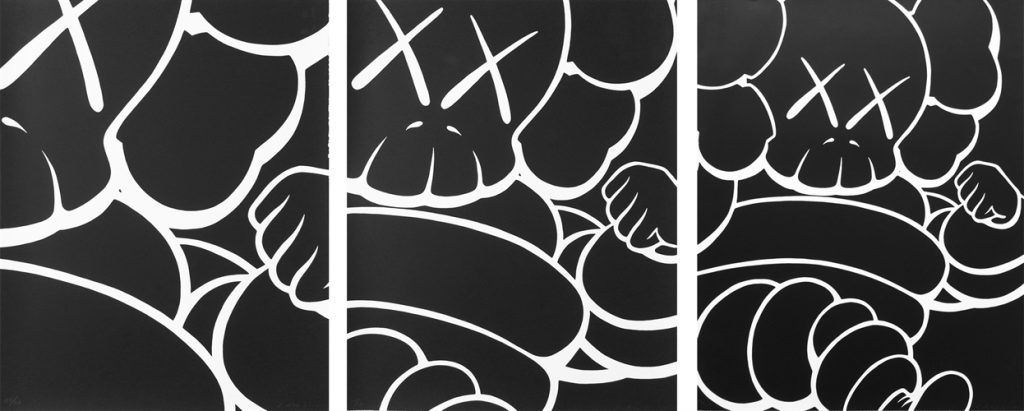
KAWS, Running Chum (complete set of 3 works) (2000). Est. $50,000–$70,000.
Renowned globally as the street artist KAWS, Brian Donnelly has traversed the art and design world with a distinctive cartoonish style. Central to his iconography are characters with X-ed-out eyes that are rooted in his early career as a street artist. Among his best-known characters is the Chum figure, which is based on the Michelin Man and has appeared in the artist’s paintings, sculptures, prints, and even toy figurines. Chum is, in fact, among the artist’s earliest subjects to appear in his prints. The complete set of Running Chum—a series of three screenprints in white ink on black paper—date back to 2000. Only five other complete sets from this small edition of 50 have ever come to auction, making the set in Contemporary Editions particularly exciting to bring to sale. Like many of KAWS early prints, Running Chum was published by the artist himself, and this particular example was gifted to a friend and fellow artist.
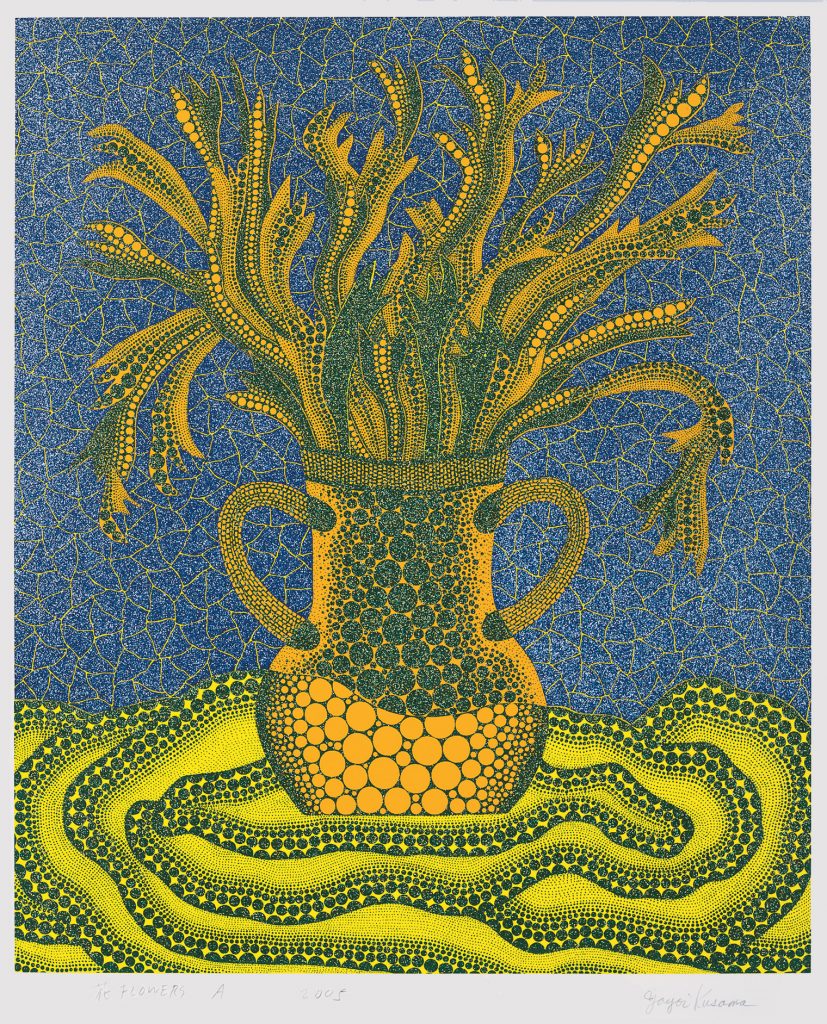
Yayoi Kusama, Flowers A | 花 (2005). Est.$25,000–$35,000.
Yayoi Kusama is widely known for her avant-garde vision and revolutionary impact on contemporary art. Her print Flowers A | 花 originally from 1984 and reprinted in 2005 is a poignant example of the repetitive and obsessive patterns that are synonymous with her work. The flower subject is a recurring motif in the artist’s oeuvre and encapsulates her lifelong fascination with nature and the infinite. This print was created during a significant period in Kusama’s life. After achieving success in New York, she made the bold decision to return to Japan and move into a mental hospital where she still resides today. There, she worked prolifically but in relative obscurity for more than a decade before a renewed interest in her work took place. Her work today resonates more than ever with audiences around the world—its viral tendencies speak for itself. The artist’s prints are a more accessible and finely subtle way to own a work by one of the best-loved artists of our time.
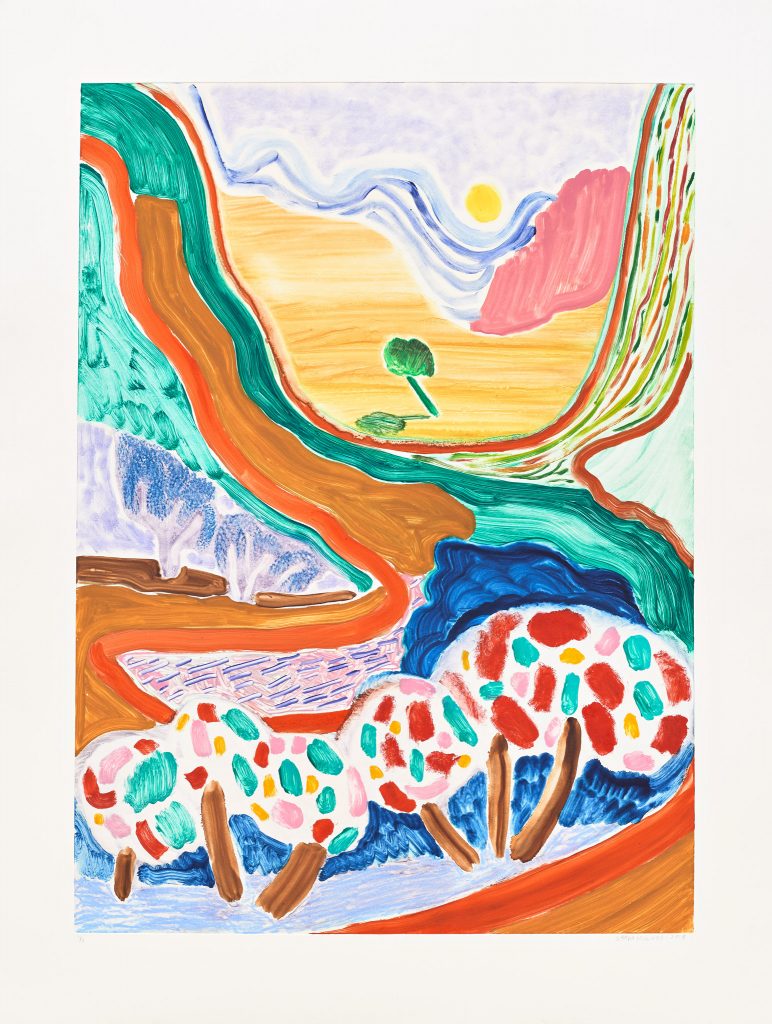
Shara Hughes, Truth in Your Shadows 2 (2018). Est. $70,000–$100,000.
Shara Hughes’ work pushes the boundaries of traditional landscape art. Approaching the subject whimsically, the artist creates vibrant, otherworldly scenes often imbued with a touch of surrealism while still adhering to a pictorial logic. Truth in Your Shadows 2 derives from a body of works (a special classification of unique prints called monotypes) developed in collaboration with Pace Prints.
As part of the exhibition “Surprise Anxiety” at Pace Prints (2018), the present work was featured alongside other monotypes, including the ghost image for this work. Created with the ghost printing process, where Hughes uses the remnant pigment from the first printing to create a second impression, she intuitively transforms the scene with new and rich, jewel-toned additions, painting directly onto the plate. Layering over the shadow of the earlier composition, while also making erasures, results in a work that is vaguely familiar yet distinctively new. This process creates a chain of imagery through the works, which the artist likens to the pathways of memory.
Speaking to Vogue.com in 2018 of the monoprint process, Hughes said “I was trying to figure out a way to use this process as something I couldn’t do in my studio or without a press. I didn’t want to make something that looked like my paintings. I wanted an extension of what I do regularly. I found that you really can’t get away with anything with the monoprint process. Every little smudge is going to transfer and show all your mistakes. In some ways, it made me more selective about color and commitment to mark-making than I usually am.”
The market for Hughes’ work has soared over the past few years, contributing to the collectability of her work that is poised to stand the test of time.
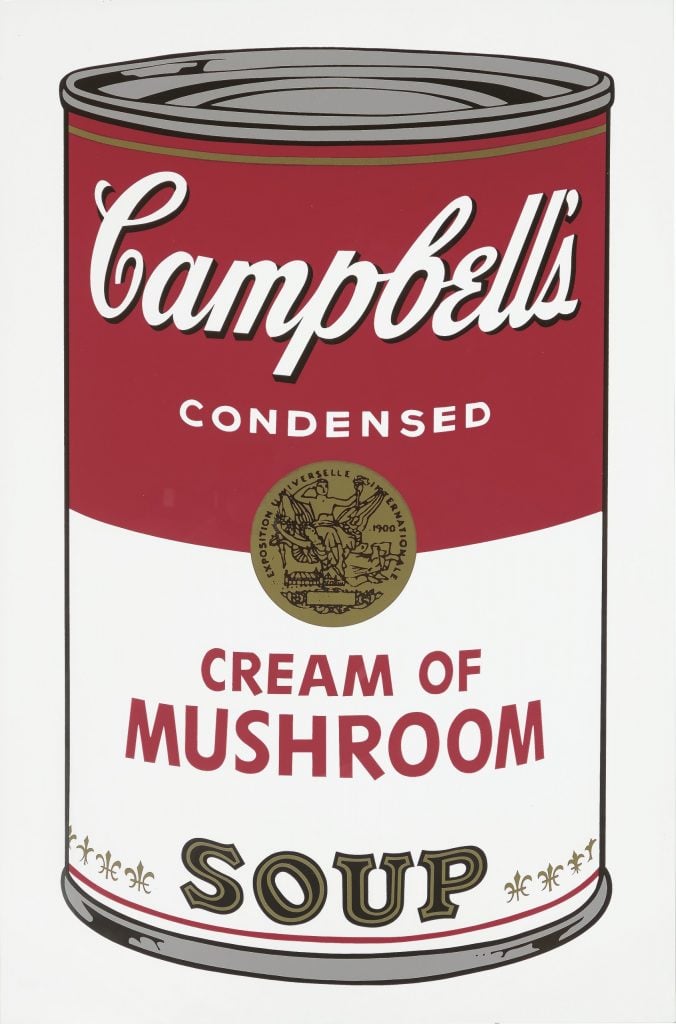
Andy Warhol, Cream of Mushroom (from Campbell’s Soup I) (1968). Est. $30,000–$50,000.
Warhol’s “Soup Cans” are among the most recognizable images in art history. There are conflicting stories of how this series came to be. At one point, Warhol told interviewers that the idea initially came from the fact that he ate the brand’s tomato soup every day for lunch for 20 years, before he could afford to eat out.
In December 1961, Warhol allegedly paid interior decorator and gallery owner Muriel Latow 50 dollars for the idea to use this iconic image. According to his friend Ted Carey, Latow had said: “You’ve got to find something that’s recognizable to almost everybody. Something like a can of Campbell’s soup.” Subsequently, Campbell’s soup debuted in Warhol’s work when he showed at the Ferus Gallery in Los Angeles in 1962.
Both his Campbells Soup Can I and II portfolios explore the company’s packaging with their simple graphic designs—a symbol of ordinary American life. Repeated in grid formations, these everyday items were transformed into Minimalist artworks. By the time the two “Campbell’s Soup Can” portfolios were published, the imagery and Warhol were hugely successful. In 1985, Campbell’s, the company, commissioned Warhol to create a series of paintings of their dry-mix soups.
Adapting a technique traditionally marginalized in “high” art (screenprinting), Warhol’s “Soup Cans” caused a sensation in the art world, asking questions of what can be considered a work of art. The popularity of the imagery has endured to this day and have become some of Warhol’s most iconic works.
Contemporary Editions is now open for bidding through January 31, 2023.